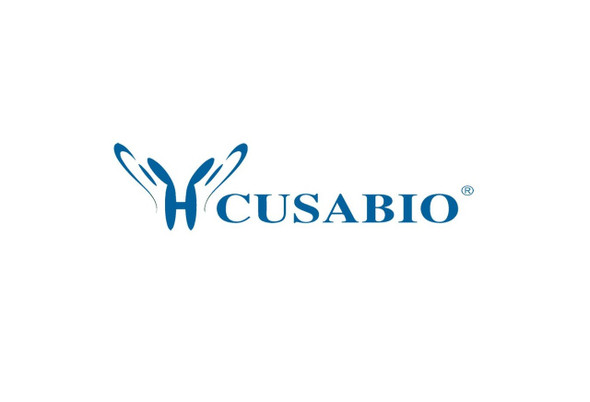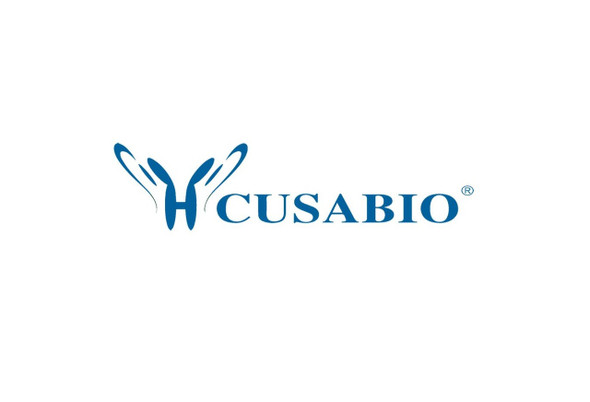Cusabio Human Recombinants
Recombinant Human Potassium voltage-gated channel subfamily D member 1 (KCND1), partial | CSB-YP012022HU
- SKU:
- CSB-YP012022HU
- Availability:
- 25 - 35 Working Days
Description
Recombinant Human Potassium voltage-gated channel subfamily D member 1 (KCND1), partial | CSB-YP012022HU | Cusabio
Alternative Name(s): Voltage-gated potassium channel subunit Kv4.1
Gene Names: KCND1
Research Areas: Neuroscience
Organism: Homo sapiens (Human)
AA Sequence: NFSRIYHQNQRADKRRAQQKVRLARIRLAKSGTTNAFLQYKQNGGLEDSGSGEEQALCVRNRSAFEQQHHHLLHCLEKTTCHEFTDELTFSEALGAVSPGGRTSRSTSVSSQPVGPGSLLSSCCPRRAKRRAIRLANSTASVSRGSMQELDMLAGLRRSHAPQSRSSLNAKPHDSLDLNCDSRDFVAAIISIPTPPANTPDESQPSSPGGGGRAGSTLRNSSLGTPCLFPETVKISSL
Source: Yeast
Tag Info: N-terminal 6xHis-tagged
Expression Region: 410-647aa
Sequence Info: Cytoplasmic Domain
MW: 27.7 kDa
Purity: Greater than 90% as determined by SDS-PAGE.
Relevance: Pore-forming (alpha) subunit of voltage-gated rapidly inactivating A-type potassium channels. May contribute to I(To) current in heart and I(Sa) current in neurons. Channel properties are modulated by interactions with other alpha subunits and with regulatory subunits.
Reference: Homo sapiens mRNA for shal-type potassium channel KCND1 (Kv4.1).Makita N., Shirai N., Sawa H., Sasaki K., Nagashima K., Yoshida M.C., Kitabatake A. Transcription map in Xp11.23.Strom T.M., Nyakatura G., Hellebrand H., Drescher B., Rosenthal A., Meindl A. Complete sequencing and characterization of 21,243 full-length human cDNAs.Ota T., Suzuki Y., Nishikawa T., Otsuki T., Sugiyama T., Irie R., Wakamatsu A., Hayashi K., Sato H., Nagai K., Kimura K., Makita H., Sekine M., Obayashi M., Nishi T., Shibahara T., Tanaka T., Ishii S. , Yamamoto J., Saito K., Kawai Y., Isono Y., Nakamura Y., Nagahari K., Murakami K., Yasuda T., Iwayanagi T., Wagatsuma M., Shiratori A., Sudo H., Hosoiri T., Kaku Y., Kodaira H., Kondo H., Sugawara M., Takahashi M., Kanda K., Yokoi T., Furuya T., Kikkawa E., Omura Y., Abe K., Kamihara K., Katsuta N., Sato K., Tanikawa M., Yamazaki M., Ninomiya K., Ishibashi T., Yamashita H., Murakawa K., Fujimori K., Tanai H., Kimata M., Watanabe M., Hiraoka S., Chiba Y., Ishida S., Ono Y., Takiguchi S., Watanabe S., Yosida M., Hotuta T., Kusano J., Kanehori K., Takahashi-Fujii A., Hara H., Tanase T.-O., Nomura Y., Togiya S., Komai F., Hara R., Takeuchi K., Arita M., Imose N., Musashino K., Yuuki H., Oshima A., Sasaki N., Aotsuka S., Yoshikawa Y., Matsunawa H., Ichihara T., Shiohata N., Sano S., Moriya S., Momiyama H., Satoh N., Takami S., Terashima Y., Suzuki O., Nakagawa S., Senoh A., Mizoguchi H., Goto Y., Shimizu F., Wakebe H., Hishigaki H., Watanabe T., Sugiyama A., Takemoto M., Kawakami B., Yamazaki M., Watanabe K., Kumagai A., Itakura S., Fukuzumi Y., Fujimori Y., Komiyama M., Tashiro H., Tanigami A., Fujiwara T., Ono T., Yamada K., Fujii Y., Ozaki K., Hirao M., Ohmori Y., Kawabata A., Hikiji T., Kobatake N., Inagaki H., Ikema Y., Okamoto S., Okitani R., Kawakami T., Noguchi S., Itoh T., Shigeta K., Senba T., Matsumura K., Nakajima Y., Mizuno T., Morinaga M., Sasaki M., Togashi T., Oyama M., Hata H., Watanabe M., Komatsu T., Mizushima-Sugano J., Satoh T., Shirai Y., Takahashi Y., Nakagawa K., Okumura K., Nagase T., Nomura N., Kikuchi H., Masuho Y., Yamashita R., Nakai K., Yada T., Nakamura Y., Ohara O., Isogai T., Sugano S.Nat. Genet. 36:40-45(2004)
Storage: The shelf life is related to many factors, storage state, buffer ingredients, storage temperature and the stability of the protein itself. Generally, the shelf life of liquid form is 6 months at -20?/-80?. The shelf life of lyophilized form is 12 months at -20?/-80?.
Notes: Repeated freezing and thawing is not recommended. Store working aliquots at 4? for up to one week.
Function: Pore-forming (alpha) subunit of voltage-gated rapidly inactivating A-type potassium channels. May contribute to I(To) current in heart and I(Sa) current in neurons. Channel properties are modulated by interactions with other alpha subunits and with regulatory subunits.
Involvement in disease:
Subcellular Location: Membrane, Multi-pass membrane protein, Cell projection, dendrite
Protein Families: Potassium channel family, D (Shal) (TC 1.A.1.2) subfamily, Kv4.1/KCND1 sub-subfamily
Tissue Specificity: Widely expressed. Highly expressed in brain, in particular in cerebellum and thalamus; detected at lower levels in the other parts of the brain.
Paythway:
Form: Liquid or Lyophilized powder
Buffer: If the delivery form is liquid, the default storage buffer is Tris/PBS-based buffer, 5%-50% glycerol. If the delivery form is lyophilized powder, the buffer before lyophilization is Tris/PBS-based buffer, 6% Trehalose, pH 8.0.
Reconstitution: We recommend that this vial be briefly centrifuged prior to opening to bring the contents to the bottom. Please reconstitute protein in deionized sterile water to a concentration of 0.1-1.0 mg/mL.We recommend to add 5-50% of glycerol (final concentration) and aliquot for long-term storage at -20?/-80?. Our default final concentration of glycerol is 50%. Customers could use it as reference.
Uniprot ID: Q9NSA2
HGNC Database Link: HGNC
UniGene Database Link: UniGene
KEGG Database Link: KEGG
STRING Database Link: STRING
OMIM Database Link: OMIM









